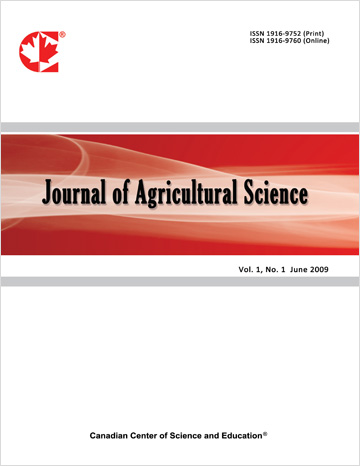Mapping of QTL for Color of Noodle Dough Sheet in a Doubled Haploid Population
- H. Kang
- C. S. Kang
- H. Kim
- C. S. Park
Abstract
This study was conducted for identification of the quantitative trait loci (QTL) associated with the color of flour and noodle dough sheets for the production of white salted noodles by analysis of a doubled haploid population from a cross between Korean wheat cultivars carrying different color values for the flour and noodle dough sheets. The DH population was evaluated in replicated field trials in 2011 and 2012 in upland conditions in Iksan, Korea. The color differences were measured as CIE-LAB L, a and b values. Xgwm190 located on chromosome 5D explained 13.3%–22.8% of the phenotypic variation in the color of flour over the average of two years. Xgwm190 also explained 11.8% and 24.1% of the phenotypic variation for the L and b values of the noodle dough sheets for the average of two years, respectively. Xbarc81 and Xgwm133 accounted for 7.9% and 9.8% of the phenotypic variation in the b value of flour produced in 2012 and the noodle dough sheets from flour produced in 2011, respectively. The putative marker for flour and noodle dough sheet color, Xgwm190, was applied to validate the relationship between genotypes of 24 Korean wheat cultivars. Fourteen of the Korean wheat cultivars contained genotype a, which represented homozygous to Keumkang at Xgwm190, showed lower L values of the flour and noodle dough sheets (91.6 and 83.5, respectively) than genotype b (93.6 and 85.1, respectively), which represented homozygous to Olgeuru at Xgwm190. Xgwm190 could be used for the selection of wheat lines with bright color in Korean wheat breeding programs.
- Full Text:
 PDF
PDF
- DOI:10.5539/jas.v7n5p182
Journal Metrics
- h-index: 67
- i10-index: 839
- WJCI (2023): 0.884
- WJCI Impact Factor (2023): 0.196
Index
- AGRICOLA
- AGRIS
- BASE (Bielefeld Academic Search Engine)
- Berkeley Library
- CAB Abstracts
- ChronosHub
- CiteSeerx
- CNKI Scholar
- Copyright Clearance Center
- CrossRef
- DESY Publication Database
- DTU Library
- e-Library
- EBSCOhost
- EconPapers
- Elektronische Zeitschriftenbibliothek (EZB)
- EuroPub Database
- Excellence in Research for Australia (ERA)
- Google Scholar
- Harvard Library
- IDEAS
- iDiscover
- Jisc Library Hub Discover
- JournalTOCs
- KindCongress
- LIVIVO (ZB MED)
- LOCKSS
- Max Planck Institutes
- Mendeley
- MIAR
- Mir@bel
- NLM Catalog PubMed
- Norwegian Centre for Research Data (NSD)
- Open J-Gate
- OUCI
- PKP Open Archives Harvester
- Polska Bibliografia Naukowa
- Qualis/CAPES
- RefSeek
- RePEc
- ROAD
- ScienceOpen
- Scilit
- SCiNiTO
- Semantic Scholar
- SHERPA/RoMEO
- Southwest-German Union Catalogue
- Standard Periodical Directory
- Stanford Libraries
- SUDOC
- Swisscovery
- Technische Informationsbibliothek (TIB)
- Trove
- UCR Library
- Ulrich's
- UniCat
- Universe Digital Library
- WorldCat
- WRLC Catalog
- Zeitschriften Daten Bank (ZDB)
Contact
- Anne BrownEditorial Assistant
- jas@ccsenet.org
